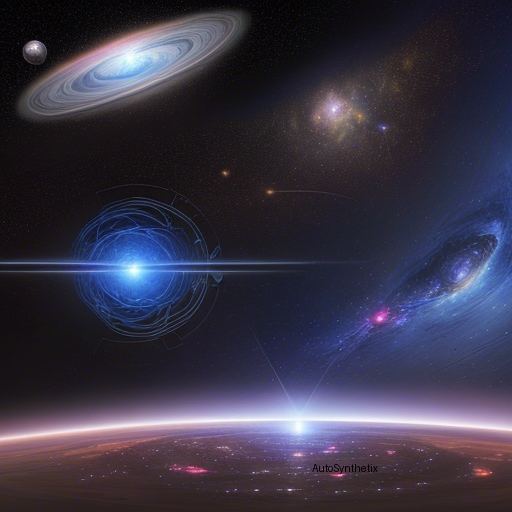Introduction
The ever-evolving world of astrophysical research often pushes the boundaries set forth by Albert Einstein's iconic theory of general relativity. In their pursuit of uncovering elusive phenomena like gravitational waves, scientists have come across instances where subtle discrepancies challenge even the most revered cosmic principles. This article delves into a fascinating arXiv publication exploring the intricate relationship between potential misconceptions stemming from deviations in general relativity, gravitational wave observations, and ensuing challenges in accurately identifying celestial occurrences known as strong lenses, micro-lenses, and weak ones.
Unveiling Hidden Complexity in Spacetime Distortions
As next generation observatories enhance sensitivities in capturing minute details of spacetime distortion patterns caused due to massive bodies' movements, previously undetectable nuances in gravity's behavior might surface. Consequently, opportunities arise not just limited to revisiting Einsteinian theories but extend further towards discovering entirely different compact object species hitherto unknown in conventional models. Yet, alongside these revelatory prospects lurks a cautionary tale—an increased likelihood of conflating disparate astronomical processes.
A Tangled Web of Interactions Between Exotic Compacts, GWs, And Celestial Lensings
In the realm of gravitational physics, two significant yet distinct concepts exist: gravitational wave detections resulting primarily from catastrophically colliding supermassive entities, and celestially induced lensings occurring when light traverses highly curved regions around astronomical masses. These seemingly divergent manifestations share a common origin point—influences emanating from extreme gravitation sources. Henceforth, any dissimilarity observed during observation could potentially indicate either of these scenarios or perhaps something altogether unique.
Enter the Crossroad of Misinterpretations
This thoughtful arXiv submission investigates the perils associated with distinguishing genuine celestial anomalous outcomes borne out of general relativity departures from traditional norms versus actual cases involving strongly warped photon trajectories owing to intense mass concentrations. The researchers meticulously analyze three primary forms of lensing: strong, micro, and weak, underlining the possibility of incorrectly attributing certain signals to specific categories if stringent care isn't exercised while examining prospective candidates. Their findings underscore the necessity for rigorous vetting procedures before conclusively labeling newly discovered phenomena.
Conclusion: Cautious Exploration Through Refinement in Observational Methodologies
With every stride humankind takes toward decoding the universe's mysteries comes a responsibility to scrutinize findings thoroughly against existing paradigms without predispositions. Amidst the race to push frontiers, the recent arXiv work serves as a salient reminder emphasizing vigilance amidst unprecedented discoveries emerging atop enhanced observational capabilities. By diligently refining methodologies surrounding signal interpretation, scientists ensure the accuracy required to substantiate revolutionary claims heralding epoch-making advancements in cosmology.
References: - Text adapted from original arXiv abstract: https://doi.org/10.48550/arxiv.2403.08957
Source arXiv: http://arxiv.org/abs/2403.08957v2
